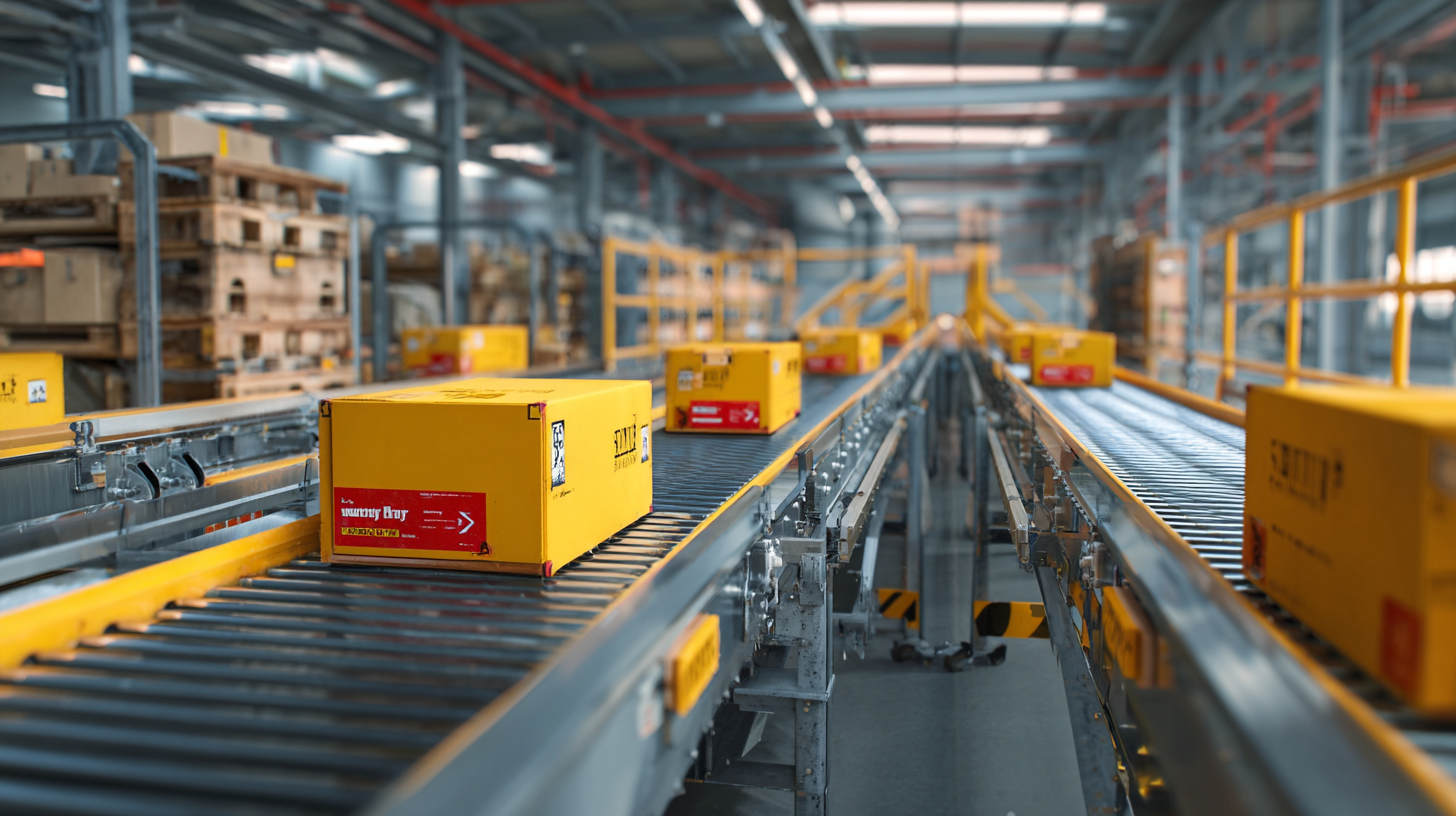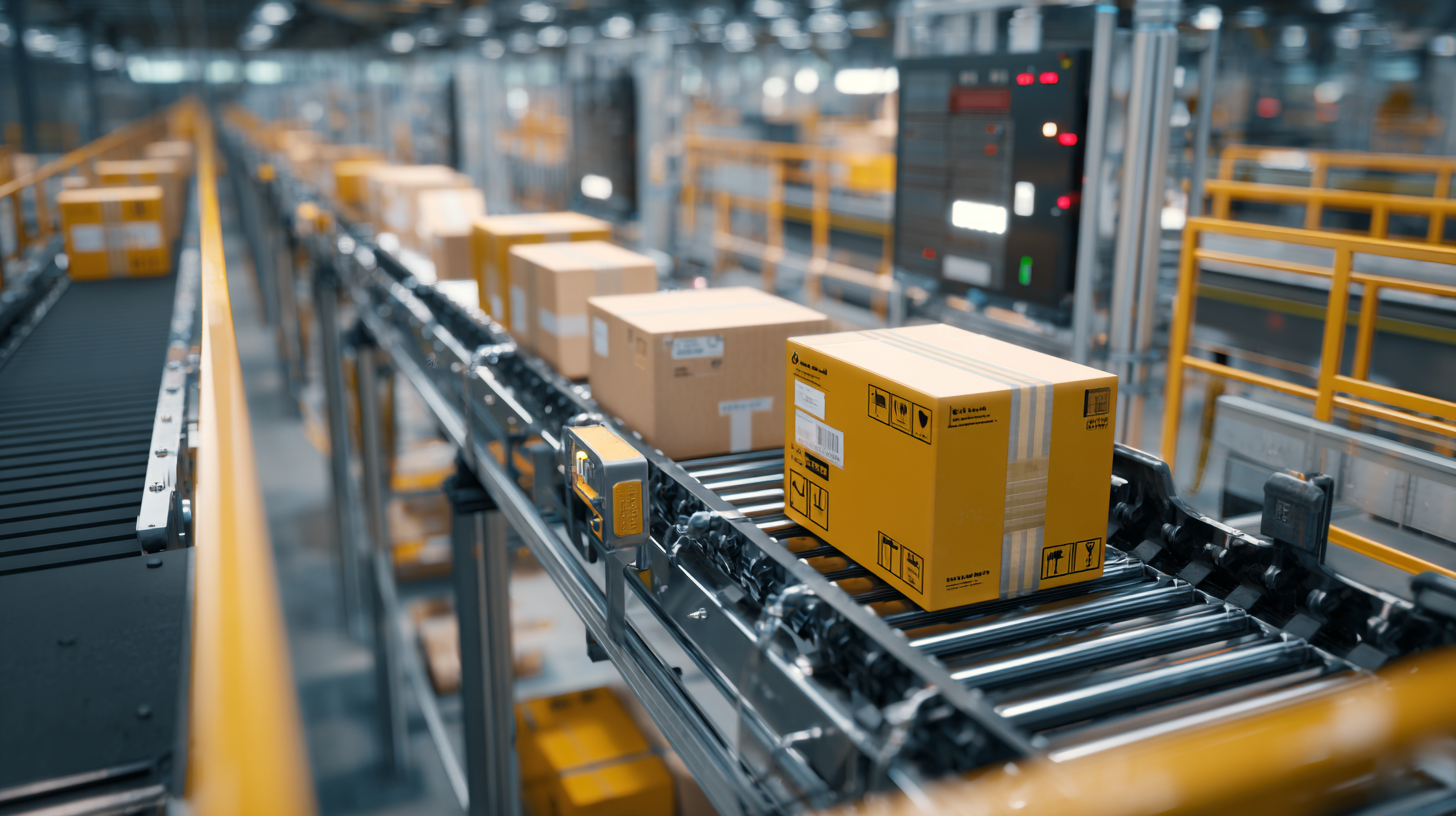As global supply chains continue to evolve in the wake of rapid technological advancements and shifting consumer demands, the importance of efficient logistics cannot be overstated. According to a recent McKinsey report, logistics costs account for approximately 8% of global GDP, underscoring the need for companies to adopt streamlined processes. One critical component of achieving this efficiency is the integration of advanced Conveyor Machines, which are projected to enhance throughput by up to 30% in automated warehouses by 2025. By leveraging the capabilities of modern Conveyor Machines, businesses can not only improve their operational efficiency but also respond more agilely to market fluctuations. This blog will explore the pivotal role that these machines play in modern logistics and provide tips on selecting the best conveyor solutions to navigate the complexities of global supply chains in the near future.

In the rapidly evolving landscape of global supply chains, the importance of robust after-sales service in conveyor machine logistics cannot be overstated. As logistics automation regains momentum, companies are not only investing in advanced conveyor systems but also recognizing that effective after-sales support is crucial to maximizing operational efficiency. High-quality after-sales services ensure that any technical issues are resolved swiftly, minimizing downtime and maintaining the flow of goods. This focus on comprehensive support allows businesses to navigate the complexities of logistics with confidence, ensuring that their supply chains remain resilient and responsive to market demands.
Moreover, with recent consolidations in the logistics sector, such as in automated equipment providers, the synergy created from mergers can lead to enhanced after-sales capabilities. When companies combine resources and expertise, they can offer improved service levels and innovative solutions tailored to client needs. This collaboration reinforces the idea that effective logistics isn't just about getting products from point A to B; it's also about ongoing support and service that fosters long-term partnerships and operational success. As automation continues to shape the industry, prioritizing robust after-sales service will be a key factor in driving competitive advantage and sustainability in logistics.
In navigating the complexities of global supply chains, understanding maintenance costs is crucial for businesses investing in conveyor systems. According to a recent report by the Material Handling Industry of America (MHIA), maintenance costs can account for nearly 20% of a conveyor system's total lifecycle expense. This highlights the importance of not only choosing the right equipment but also investing wisely in maintenance strategies to minimize long-term expenditures.
Smooth and efficient logistics hinge on the reliable operation of conveyor systems, and organizations should consider predictive maintenance as a proactive approach. A survey by McKinsey & Company revealed that predictive maintenance can reduce operational costs by up to 30% and improve equipment lifespan by 20-40%. By utilizing IoT-enabled sensors and data analytics, companies can anticipate failures and schedule timely repairs, thus optimizing the performance of conveyor machines within their supply chains. This investment in technology not only enhances efficiency but also builds resilience against disruptions, ensuring a faster response to global market demands.

The digital transformation of supply chains is reshaping efficiency benchmarks across industries. According to a recent report from McKinsey, companies that have implemented advanced digital technologies in their supply chain operations have seen productivity increase by 25% while reducing costs by up to 30%. One crucial element facilitating this transformation is the integration of smart conveyor machines, which leverage IoT (Internet of Things) and AI (Artificial Intelligence) to optimize product flows and reduce bottlenecks.

Modern conveyor systems are being equipped with sensors that provide real-time data analytics, allowing for predictive maintenance and seamless integration with warehouse management systems. A study from Deloitte indicates that this kind of digitization has helped firms decrease downtime by an impressive 28%. Additionally, by automating manual sorting processes, these conveyor systems elevate operational efficiency, leading to faster turnaround times and enhanced customer satisfaction. As businesses prepare for the evolving landscape of logistics in 2025, investing in such technology will be essential for staying competitive in a rapidly changing market.
Selecting the right conveyor machine is crucial for enhancing logistics efficiency in your business operations. As companies increasingly integrate advanced technology into their supply chains, ensuring that your conveyor systems are optimized can lead to significant productivity gains. According to recent industry reports, automating conveyor systems can improve throughput by up to 30%, making it essential to choose machines that align with your specific operational needs.
When evaluating conveyor options, consider factors such as load capacity, speed, and flexibility. For instance, a recent survey highlighted that 78% of warehouse managers reported that improper selection of equipment resulted in operational bottlenecks. Additionally, investing in systems that offer seamless integration with AI and robotics can further optimize output and minimize labor costs. As the demand for efficient logistics continues to rise, ensuring you make informed choices about your conveyor machinery will propel your business toward greater operational success.
As we move towards 2025, streamlining logistics with the integration of automation and conveyor solutions is paramount for businesses aiming to enhance efficiency. Automation in logistics is not just about replacing labor; it’s about creating a seamless flow of goods. With the global intralogistics automation market projected to reach $100 billion by 2034, integrating advanced conveyor systems can significantly improve operational workflows. Companies are beginning to realize that the right conveyor machine can reduce downtime and optimize sorting processes, making supply chains more resilient.
**Tips for Choosing Conveyor Solutions:**
1. Assess your operational needs: Different industries require specific conveyor systems tailored to their unique processes. Understanding your material handling requirements is crucial.
2. Consider scalability: As your business grows, your conveyor systems should be adaptable to changes in volume and new technologies. Look for solutions that can evolve with your demands.
3. Focus on maintenance and support: Opt for systems that come with robust maintenance solutions, ensuring minimal disruptions and longevity in performance.
By prioritizing these considerations, businesses can effectively implement conveyor solutions that not only enhance efficiency but also position them favorably in the rapidly growing logistics landscape.
| Region | Year | Conveyor Type | Efficiency Improvement (%) | Automation Level (%) |
|---|---|---|---|---|
| North America | 2025 | Belt Conveyor | 30% | 80% |
| Europe | 2025 | Roller Conveyor | 25% | 75% |
| Asia | 2025 | Modular Conveyor | 35% | 85% |
| South America | 2025 | Chain Conveyor | 28% | 70% |
| Africa | 2025 | Overhead Conveyor | 22% | 65% |
